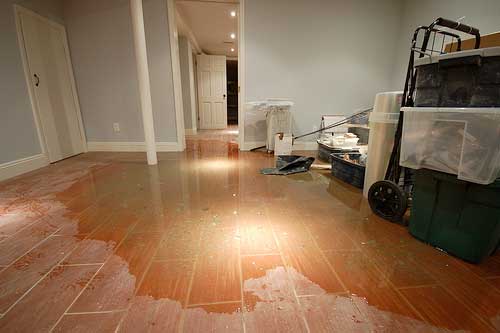Basement Waterproofing, Crawl Space Waterproofing and Foundation Repair Professionals
1000’s of completely satisfied customers can’t be wrong! In fact, they rave about us. Being family-owned and operated for over two decades has provided Select Basement Waterproofing a level of confidence that the industry is now judged by. Through our relentless customer service, we strive to be New Jersey’s safest and most proactive waterproofing contractor. Unlike the other companies, these are REAL referrals, with problems just like yours (and even worse!) that we have effectively solved. Being family-owned and operated, we pride ourselves on the 17 years of experience served in NJ with the high-quality work we have performed. Over 1000 completely satisfied customers can’t be wrong! In fact, they rave about us. Select Basement Waterproofing is the areas premier basement waterproofing, foundation repair and crawlspace waterproofing company. In an area with an abundance of older homes, it is a good idea to have your home inspected and if necessary waterproofed by a professional. Select Basement Waterproofing provides services in the metro area, as well as the surrounding suburbs. Contact Select Basement Waterproofing for a FREE Estimate (732) 526-7770
Crawl Space Specialists
Select waterproofs and repairs crawl spaces and wet basement. With crawl spaces being tight and damp by nature it’s important to control and limit moisture & humidity from the building. Increased levels of humidity and moisture in a crawl space can damage insulation, support beams, and can eventually support mold and mildew growth. Select Basement can inspect your crawl space, spot key indicators, and help design a plan to get the crawl space into the condition that you want. Dry crawl spaces have fewer bugs, less moisture, and less problems. Our crawl space encapsulation and repair methods are closed and secure and can help to make your home more energy-efficient. Floods and standing water can cause problems, even in crawl spaces and Select Basement Waterproofing of New Jersey can help!
Facts About New Brunswick, NJ
New Brunswick, city, seat of Middlesex county, eastern New Jersey, U.S. It lies on the Raritan River, at the terminus of the old Delaware and Raritan Canal, 21 miles (33 km) south-southwest of Newark. The site, first known as Prigmore’s Swamp, was settled in 1681 by John Inian. Called Inian’s Ferry (1713), it was renamed about 1724 for George I of England, who was also the duke of Brunswick. George II granted it a town charter in 1730.
During the American Revolution, General George Washington’s troops, retreating from New York, occupied the town in 1776, evacuating at the approach of the British under General William Howe, who remained there for about seven months. Washington returned after the Battle of Monmouth (1778) and, while there, issued orders for the march south culminating in the victorious Battle of Yorktown. Throughout the revolutionary period the town’s port was a base for privateers who preyed upon British ships around Manhattan.
The Camden and Amboy (later the Pennsylvania) Railroad reached New Brunswick in 1838. Since the late 19th century, when James W. and Robert W. Johnson established a firm (Johnson & Johnson) to make adhesive tape and surgical dressings, New Brunswick has been a major producer of hospital supplies and pharmaceuticals. The city’s other manufactures include vitamins and health food, batteries, plastics, toys, packaging, and automobile parts.
Rutgers University was founded there as Queen’s College in 1766 and was made the state university in 1945. New Brunswick Theological Seminary (founded 1784), the oldest theological school in the United States, has been in the city since 1810. On November 6, 1869, New Brunswick was the scene of the first intercollegiate football game, between Rutgers and Princeton. Inc. city, 1784. Pop. (2000) 48,573; Edison–New Brunswick Metro Division, 2,173,869; (2010) 55,181; Edison–New Brunswick Metro Division, 2,340,249.
From the mid-17th century to present day, New Brunswick is full of rich history, facts and details, places and structures, and the many people who contributed to its prominent growth over these many decades. Along the way there are multitudes of interesting facts, pertinent stories, recorded historical data, and even legends — all of which may or may not be preserved in historical annals.
In the 1600s…
During the last half of the 17th century, the area that was to become metropolitan New Brunswick was no more than a Native American village in a dense cedar forest with some swampland along the Raritan River. The first recorded European inhabitant of the area was a man named Daniel Cooper, who resided near the present site of the Albany Street bridge approach. Mr. Cooper operated the ferry that was later purchased by John Inian.
In 1681, John Inian purchased two lots from the Leni-Lenape containing one mile of riverfront and two miles deep, or 1280 acres. This was the first purchase of land in what is now the City of New Brunswick. It had been referred to by the Indians simply as “River.”
At a point in the 1690s, the area became known as Prigmore’s Swamp, locally named after John Prigmore (or Pridmore) who lived along the banks. Our visionary pioneers settled and grew the area alongside a river that fostered trade and commerce, with a port that would soon be thriving with people, activity, taverns and inns.
In the 1700s…
When settler John Inian envisioned an expanding and useful transit system, he purchased ferry rights on the river, and around 1713, Prigmore’s Swamp became Inian’s Ferry. In 1724 the town was renamed New Brunswick in honor of King George I, the Duke of Brunswick.
The City was then incorporated on December 30, 1730, two weeks before New York City incorporated. During the 1730s there was a large Dutch immigration from Albany, New York, settling on what would later be named “Albany Street.” New Brunswick became an important crossroads between Philadelphia/Trenton and New York City. George Washington, Ben Franklin, Alexander Hamilton and John Adams are just a few of our prominent leaders and innovators who made history here before, during, and after the Revolutionary War.
New Brunswick re-chartered in 1784, and reconstruction of the City began in the aftermath of the Revolution. The city government organized with a Mayor, a Recorder, and a Common Council. Committees were named to take care of the poor, to look after the city water wells and street lighting, and to report on drains and fire protection.
In 1792, after a rivalry with Perth Amboy for the construction of a county court house, New Brunswick offered to contribute 300 pounds sterling toward a new building, and thus, New Brunswick became the County seat.
WHERE TO FIND US:
SELECT BASEMENT WATERPROOFING
275 Rte 79 Morganville, NJ 07751
Phone: (732) 526-7770

